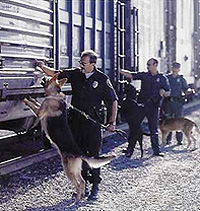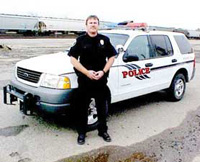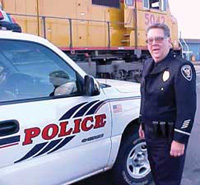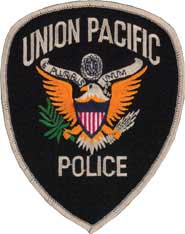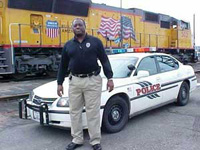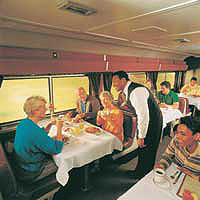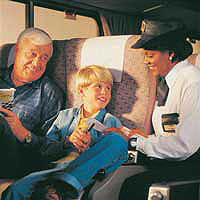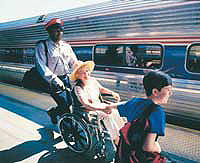|
By Susan Derby
The railroads of America have experienced both a great expansion and a drastic reduction in their 173-year history. And now it seems they are on the brink of another round of expansion, though spurred by a different need than before. While the first period of growth reflected a need for more and faster movement of goods, the future likely will put greater emphasis on rail traffic geared for safer, more efficient human transportation as the nations cities grow ever more populated.
In current times, though, the use of railroads fulfills both human transportation and cargo relocation needs. Each aspect has developed into very separate needs in many forms, from type of equipment owned and maintained to staff hiring needs. And, as anyone in the uniform industry can well imagine, their apparel needs are just as distinct.
Before we look deeper at the uniforms of Amtrak and Union Pacificas representative examples of each branch of rail service lets look more at how the rail industry got to the position it now holds. Looking at the past can help estimate what lies ahead for these iron roads.
In New England in 1830, the first 23 miles of railroad were laid. They were fashioned after the tracks left by wagon wheels and helped move raw goods downhill before any engine was developed to power the train. By 1840, 2,800 more miles were added, mostly in the Northeast. Ten more years tripled that number. On May 10, 1869, the Union Pacific and Central Pacific railroads met in Utah, completing the first coast-to-coast railway. By the turn of the century, about 200,000 miles of track created a web of transportation across the nation.
Trains revolutionized the speed by which people and goods could travel. Passenger coaches were comfortable and fully staffed. The upper class would enjoy eight-course meals in dining cars and queen-sized beds in sleeping compartments, serviced by classically uniformed waiters and agents. And for each type of raw or finished product, freight cars were designed to move the materials safely. Cattle cars, coal hoppers, liquid tank cars and standard boxcars were all staples of each railroad company.
With the 1940s came diesel and electric locomotives. These were cleaner than coal-burning steam engines. Passengers and crew alike could dress nicer without worry of ruining good clothes with soot and ash from the engine. Electric engines brought intracity rail travel into popularity, thus spawning the metropolitan train systems and subways. These too called for staff that needed quick identification by passengers. Conductors, engineers, ticket agents and red caps all came under the typical, recognizable dark blue blazer and pants that had become the uniform for the entire rail industry.
Trains both in America and around the world now are spanning bodies of water, burrowing through mountains and reaching 200 miles per hour or more. Since the invention of the car and truck, passenger and cargo use of trains has waned for the more independent travel. Almost 300,000 miles of track in the 1940s have been reduced to about 183,000, according to the National Railroad Museum.
The future of the rails now rests in two main advantages over autos. First, trains still can move masses of materials and people long distances faster and cheaper. And second, urban sprawl demands more efficient, environmentally friendly means for people to reach the hearts of cities. For passenger service, what used to be reserved for long trips or short, intracity travel is expanding to serve daily intercity commuters. High-speed trains may bring commuters from Milwaukee to Chicago and Boston to Washington, D.C. For freight, what was once only efficient for thousands of units is cost effective for tens of units.
But at the heart are still the people who operate the railroads. Conductors and ticket agents put a face on passenger rail. Police and safety officers assure companies that cargo will be protected. Some railroad companies are developing self-operating trains. But in a world where human interaction is already falling by the wayside, both Amtrak and Union Pacific are using their employees to bring humanism and service back to the rails. The first impression these companies make begins with the appearance of their employees. That impression is as much a factor to the future of the railways as the speed and comfort of the trains themselves.
The need for railway police began shortly after the first railroads were created. They protected the shipped materials from theft. They kept the hobos out of the cars and railroad yards. They protected certain passengers, like presidential candidates, on the property they knew so well.
Todays rail police serve many of those same functions, but they also perform safety training sessions, accident investigations, school lessons, illegal materials searches and more.
|




